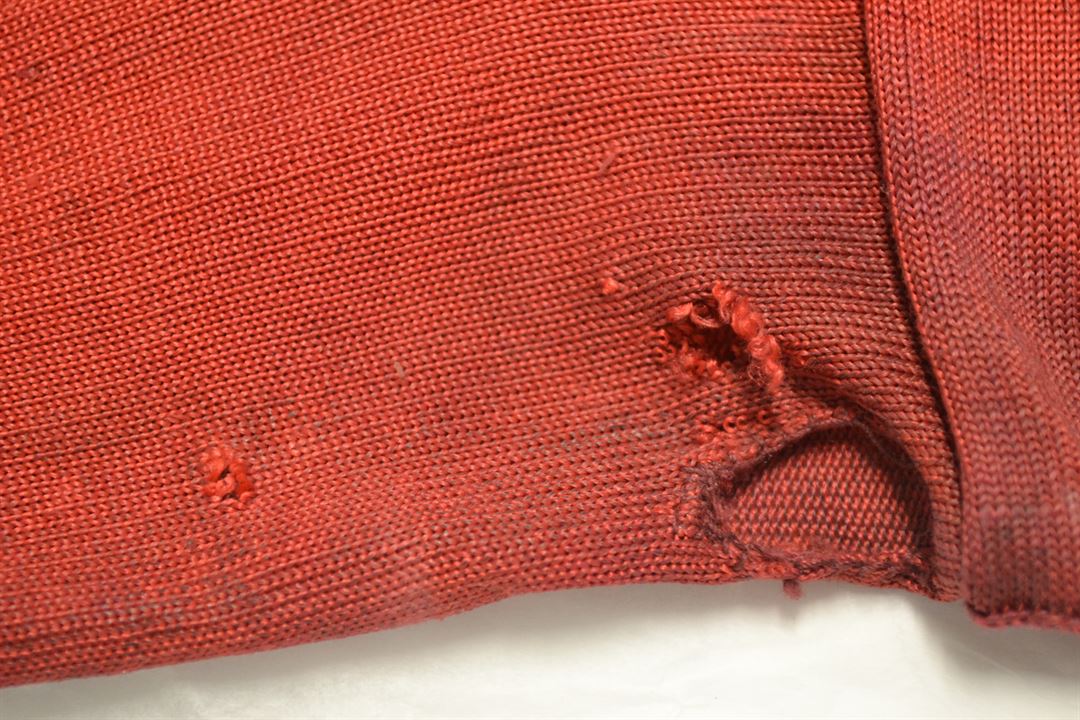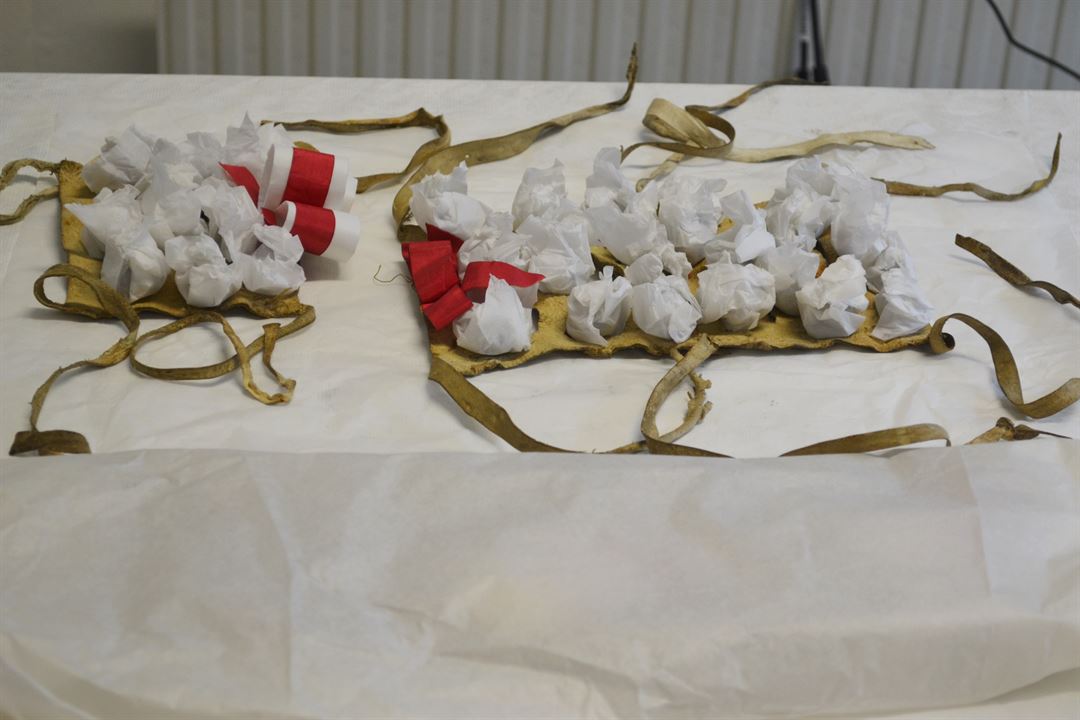Enter a search term above to search our website
Pages
News
Star Objects
In the past few days, I have had the opportunity to examine the Dance Dress of the Glover Incorporation of Perth, which has a complex number of fascinating elements.
The Glover Incorporation of Perth I was one of the craft incorporations of the medieval town that continued to operate down to the twentieth century. The organisation regulated the trades of skinners (craftsmen who specialised in skinning animals) and glove-makers as well as protecting its members and their families. During Perth’s trade holidays and fairs, members of the Incorporation would perform their own Sword Dance, such outfits were worn by all performing members. This costume is the only surviving example and elements of it may go back to 1633 (when the Glovers performed for Charles I on a floating platform in the river Tay) but it has been altered and repaired several times since it was in active use until the 1850s.
The costume consists of a cream and green silk dress complemented by a red-pink-blue hat trimmed with a fringe of nuts; a pair of red silk tights; gloves; a petticoat; cream leather shoes; and leather pads decorated with brass bells which would have been attached to the wrists and ankles of the dancer. In this drawing and archive photograph, you can see how the costume may have been worn!


In 2019, conservator Tuula Pardoe ACR from the Scottish Conservation Studio carried out a condition assessment and treatment proposal for the costume to ensure its long-term preservation. I had the chance to implement her recommendations for storage regarding the leather pads decorated with bells, as well as reinforcing holes in the tights.

Detail of one foot of the tights before treatment.

One pair of leather pads before packing.
There were small holes in the tights with unravelling edges on the sole of one of the feet. In the past, similar holes had been mended with a thick thread and buttonhole stitches. To prevent ladders from forming in the knitted structure, it was recommended that the loops of the structure along the edges of the ‘new’ holes should be stitched. I used a red polyester thread which was carefully passed through the unravelled loops of the knit. The holes are still apparent, but they should not actively unravel if the tights are handled or slightly stretched, for example, while being mounted for display. This intervention was intended to be minimal to preserve the ‘authenticity’ of the tights as well as enabling future and further retreatment if needed.

Stitching in progress

Sole before treatment

Sole after treatment
Metal components and organic materials (such as leather) should not be in contact with each other whilst in storage because corrosion can cause severe damage and stains. To prevent this, the bells on the leather pads were wrapped individually in acid-free tissue paper to reduce their contact with the leather. Acid-free tissue paper has the property to act as a buffer and neutralises acidic by-products released by degrading materials and artefacts. It is commonly used in museum storage. However, acid-free tissue paper loses its buffering ability over time and needs to be changed when it is turning yellow. Here is an example of yellowed tissue paper compared to new tissue paper:

Examples of old and yellowed tissue paper on the left. Examples of new acid-free tissue paper on the right.
I also noticed that the bows decorating the leather pads were flattened and crumbled during storage. I used tubes of Melinex® (a chemically inert polyester film) wrapped in tissue paper to support them. Sharp folds and creases can damage historic textiles because they put them under stress and create weak points which can result in splits. This support system should therefore prevent creases from reoccurring but also potential splits in the ribbons forming the bows.

Flat and supported bows
All historic objects degrade over time; however, we can significantly reduce the rate of their decay to sustainably preserve and enjoy them in the future. Preventive actions, such as those discussed in this post concerning the Glovers’ Dance Dress, are some of the key measures that museums need to take to preserve the collections they care for.